ACADEMICS
Sovereign debt relief mechanisms and reflection on their effect

Sovereign debt relief mechanisms and reflection on their effect
By Huang Meibo and Niu Dongfang
For a long time, the West has placed Africa on the margin of global development. Even before the COVID-19 pandemic, African countries’ dependence on debt had been on the rise. Under the combined impact of the pandemic and global changes, Africa’s debt risk and repayment pressure have been of great concern to the international community. During the 1982 Latin American debt crisis, the approach of debt relief was used to address the debt overhang of developing countries. This approach was then applied in the handling of debt crisis in African countries. Major measures include traditional debt relief practices, the Heavily Indebted Poor Countries Initiative (HIPC), the Multilateral Debt Relief Initiative (MDRI) and the G20’s Debt Service Suspension Initiative (DSSI) of 2020. These debt relief mechanisms are mainly carried out under the guidance of Western creditor countries and Western-led international financial institutions. With the awakening of African countries’ independence awareness and the deepening of debt relief, it is gradually realized that while these debt relief mechanisms relieve some of the debt burden of debtor countries, African countries often fall into the structural financial power of the West and become subject to the power of the Western world. In terms of the participation of the G20 DSSI, as of December 2021, 25 out of 73 countries eligible for debt suspension explicitly refused to join the Initiative. This shows that it is still controversial whether the G20’s DSSI can fundamentally and truly solve the debt problems of African countries. The reasons for refusing to join the Initiative may lie in the strengthening of African countries’ financial awareness and may also be out of the need to maintain their credit rating, to reject international financial institutions’ sovereign debt relief conditions on their domestic politics and economy, to reduce their financing dependence on multilateral financial institutions, to balance the growth of official financing and market financing, and to maintain sovereign independence through sustainable and responsible development of sovereign debt.
I. International Sovereign Debt Relief Mechanisms and Reflection on Their Effect
As an alleviating measure following the debt crisis, debt relief began to be used in Africa as early as the 1970s, when debt was written off sporadically as part of humanitarian assistance. The outbreak of debt crisis in Latin America brought systematic debt relief to the international stage and gained high attention from the international community. According to the theory of debt overhang and the Debt Laffer Curve, when a country’s debt burden is too heavy to be repaid in the normal way, the debt will dampen investment and increase uncertainties, thus hindering the country’s economic development. As a result, the country has to resort to debt relief. Direct relief of debt burden can lift its dampening effect on investment and reduce uncertainties about future prospect caused by debt overhang, thus stimulating investment. Debt relief can also improve a country’s strained fiscal space and allow more efficient fiscal expenditure decisions to be made. The above-mentioned intrinsic development mechanisms of debt relief was applied in the Latin American debt crisis in the 1980s, and then they were vigorously promoted internationally, and introduced to the African debt settlement mechanisms in the 1990s.
Historically, African debt and Latin American debt have different characteristics: Latin American debt features a structure of short-term floating and concentration (including concentration of regions and creditors), with major lenders coming from the private sector, while African countries’ creditors come from multiple sectors and are dispersed. These different structural characteristics inevitably require different international debt relief mechanisms. Therefore, in dealing with the Latin American debt crisis, the international community adopted the market-based debt relief approach and the combination of the Baker Plan and market relief methods. The former is mainly debt conversion (such as debt repurchase, debt equity swap and debt securitization, etc.), and the latter is mainly the Brady Plan. In dealing with the African debt crisis, the traditional bilateral and multilateral debt relief methods and the new multilateral debt relief methods were used at the same time. The former mainly involves the debt relief by the Paris Club and the traditional debt relief by multilateral creditors, and the latter was the HIPC and the MDRI. The Paris Club, composed of the richest 22 countries in the world, provides bilateral official debt arrangements for debtor and creditor countries, including debt restructuring, debt relief and even debt cancellation. In 1996, multilateral creditors began to make multilateral debt an object of debt relief. The HIPC was introduced as a comprehensive multilateral debt reduction mechanism, aiming at eliminating the debt overhang of debtor countries and keeping their debt sustainable. To deepen the debt relief of HIPC, the G8 Summit in 2005 put forward the Multilateral Debt Relief Initiative, which cancelled 100% of the qualified multilateral debts owed to the IDA, IMF and African Development Fund. In 2007, the Inter-American Development Bank also took part and offered 100% debt cancellation to five heavily indebted poor countries in Latin America.
Also Read: Deborah Samuel: You Stood Alone in Life, In Death with…
Theoretically, debt relief can improve the overall balance of payments of debtor countries by reducing their external debt stock, alleviate the pressure of external debt and that on fiscal expenditure to a certain extent. It therefore helps create an enabling external environment for debtor countries to adopt a more proactive fiscal policy in an effort to expand domestic demand for better development of their economies. For example, the debt relief promised by HIPC and MDRI has indeed significantly reduced the debt stock of qualified countries and hence the debt burden of developing countries. However, what could be learned from previous rounds of international debt relief is that such relief measures do not necessarily lead to expected outcomes. For instance, despite the creative steps in HIPC on traditional debt relief mechanisms, some low-income African countries still face a high debt burden in practice even though HIPC Initiative has been implemented. It might be the case that, after debt relief,concessional refinancing from multilateral lenders does not bring down the debt stock of low-income African countries. Instead, multilateral debt makes up a larger proportion of total debt. Most of the debt relief schemes address only the symptoms but not the root cause. What’s more, the schemes often come with too many conditions attached. Debt-related indicators might witness an immediate drop to meet the standard of sustainability, which is determined by Western countries, but start to deteriorate as triggers of a debt crisis emerge. Fundamentally, the existing international debt governance system does not provide a long-term and ultimate solution to Africa’s debt problems, and worse still, even erode the sovereignty of African countries in some aspects at the cost of Africa’s development prospects.
II. G20 Debt Service Suspension Initiative, Common Framework and Their Possible Negative Impact
The COVID-19 pandemic has adversely affected the solvency and liquidity indicators of most emerging markets and developing economies. Some countries already ran high debt risks prior to the pandemic. The pandemic further aggravated the fiscal burden of the government from both the expenditure and revenue sides, and some fragile countries faced higher financing costs or fewer opportunities to obtain external financing, pushing the global debt level to a new height. To address the rising debt risk, the Paris Club, G20 finance ministers and central bank governors agreed on the DSSI in April 2020, where bilateral official creditors agreed to, during a limited period, suspend debt service payments from the poorest countries (73 low- and lower middle-income countries) that request the suspension. Afterward, G20 bilateral official creditors agreed on three rounds of extension, with the final round extended through the end of December 2021. At the G20 meeting in November 2020, finance ministers and central bank governors approved the Common Framework for Debt Treatments beyond the DSSI to further assuage the negative impact of the COVID-19 on developing economies. At the meeting on April 8th 2021, G20 finance ministers and central bank governors announced that they would hold the “first meeting of the first creditor committee” and start negotiations on the debt reduction agreement under the Common Framework. By the end of December 2021, 48 out of 73 countries eligible for debt relief had participated in the Initiative and the Common Framework, and repayment of maturing debts to the tune of $12.9 billion had been suspended. However, there were still 25 countries that did not participate and the reasons for their non-participation should be looked into and analyzed.
A reflection on the negative impact of previous rounds of debt relief on developing countries shows that the G20 DSSI and Common Framework, as a comprehensive debt governance platform to deal with the global debt problem since the start of COVID-19, may be perpetuating the logic and cycle of debt reliefs in the past, which brought much-needed funds for Africa while having many negative impacts.
(1) Undermining the credit ratings of African debtor countries
Since the beginning of the 21st century, especially after the 2008 financial crisis, the strengthening of global financial supervision and regulation has resulted in the contraction of cross-border loan business of banks from developed economies. But international capital flows in the forms of bonds and investment portfolios have seen considerable development, followed by significant changes in the structure of sovereign debt in developing countries. An increasing number of African governments have been actively seeking new financing from private creditors. From 2000 to 2019, 18 African sovereign countries entering the international capital market for the first time issued 125 types of Eurobond, with a total value of more than 155 billion dollars. According to the Signaling Theory, if a debtor country, in the international financial market, joins the DSSI or the Common Framework, it will trigger default clauses in the bond agreements. This to some extent mirrors the country’s debt predicament, and undermines the country’s credit rating, thus affecting its market stability, leading to the outflow of foreign capital and currency depreciation, weighing on its future financing in the market and damaging its long-term development. In order to avoid credit rating downgrade, debtor countries will try their best to fulfill their debt service obligations. Therefore, in 2020, 50% of developing countries carried a high risk of debt distress due to the pandemic, yet by the end of December 2021, 25 debtor countries still clearly indicated that they would not participate in the DSSI, though 17 of them were already at a medium to high risk of external debt. This means that a considerable number of debtor countries would choose fiscal austerity, cut back on other development expenditures, and continue to fulfill their sovereign debt service responsibilities even when faced with serious fiscal difficulties.
(2) Offering a leverage for international financial institutions to interfere in the internal politics and economy of debtor countries
The application of debt relief in the world has a long history. From the slow preferential debt restructuring in a specific period of time at the beginning to the adoption of the comprehensive international debt reduction strategy later, every stage reflects the political and economic agenda of developed countries and the international financial institutions under their control. The most typical example is the conditionality of debt relief. Conditionality is used to the extreme in today’s international debt relief. If a country wants to receive assistance from the international community, it must accept the structural adjustment scheme set by international institutions and take a series of adjustment measures. In September 1987, the IMF launched Special Program of Assistance (SPAs) for low-income countries facing debt difficulties in sub-Saharan Africa, which marked the first coordinated action of the international community on Africa’s prolonged debt problem. Among the six available financing channels, four involved structural adjustment, which means debtor countries must accept the IMF’s structural adjustment program to receive preferential financing. Another example, under the HIPC, a comprehensive debt reduction mechanism of multilateral lenders, debtor countries that received debt reduction or exemption should have their policy reforms and structural adjustments subject to the monitoring by the IMF and the World Bank. There is even “Double Tying” in debt relief, which means when a loan is issued, the creditor sets certain conditions, and when the loan repayment needs a relief, the creditor imposes some additional conditions. Debt reduction procedures also raise the question of whether the structural adjustment schemes set by the IMF and World Bank are scientific, neutral and fair. Ruckert (2005) believes that both the HIPC and MDRI are tools used by international financial institutions to lock developing countries on the track of neoliberal reform. Whether the neoliberal policy suggestions are applicable to developing countries has always been questioned. Moreover, the IMF and the World Bank serve as lenders on the one hand, providing loans to low-income countries, and supervisors on the other, assessing the debt sustainability and financing gap of debtor countries, and deciding the scale and setting the conditions for debt relief. Whether they can be objective and fair in actual operations is also questionable.
In 2020, the IMF and the World Bank continued with their customary conditional approach, requiring debtor countries to disclose all public debt information and placing the fiscal expenditure of debtor countries after debt reduction under oversight. They also made participation in the Common Framework a precondition for receiving matching funds. This will undoubtedly squeeze the policy space of those African countries who are in urgent need of addressing debt and financial difficulties. Macroeconomic policies, economic systems and development strategies of participating countries may be affected and restricted by international financial institutions, which is equivalent to the transfer of part of their economic sovereignty.
(3) Increasing the dependence of African debtor countries on international financial institutions
In recent years, in the debt structure of African countries, the proportion of bilateral creditors among official creditors has decreased, while that of multilateral institutions has been increasing, rising from 34% in 2016 to 80% in 2020. Especially since the pandemic, bilateral creditors, out of the need to control risks, tend to refrain from signing new loan agreements. African countries therefore become more dependent on the support of multilateral institutions and are pushed to turn to the IMF for financing. As of September 2021, IMF had provided Africa with about 24 billion US dollars of funds, including 16.5 billion of emergency aid, and provided 596 million US dollars of debt relief for 22 countries. Among the sovereign debts of African countries, the bilateral loans of official creditors have decreased, and the lending of multilateral institutions has once again become the mainstay of net financial flows.
Debt crisis and sovereign debt relief are often major reasons for the increase of multilateral debt of African countries. In all previous debt crises, in order to solve debt problems, debtor countries with low solvency fell into the “debt spiral” of “repaying previous loans by borrowing new ones” from multilateral institutions. A problem with the G20 DSSI and its Common Framework is that debt relief is mainly undertaken by bilateral official creditors and private creditors. Multilateral financial institutions such as the World Bank and the IMF participate in debt treatment by formulating long-term financing plans for debtor countries and providing loans to support debtor countries. The real result of debt relief may be a bilateral debt to multilateral debt swap. Yet, loans provided by multilateral creditors to low-income countries cannot fundamentally reduce the debt burden of developing countries. Moreover, most of the loans of multilateral institutions go to livelihood projects which have no direct economic benefits. In the future, those loans will create larger debt burden for debtor countries, which will have a negative impact on their future economic development.
(4) Debt relief may cause a decline in overall flow of international development aid
Since the 1980s, debt governance has been gradually incorporated into the international development agenda, and debt relief has become an important form of assistance from developed countries. In the 1990s, the two major debt relief mechanisms, the HIPC and the MDRI were also used as means of development financing for developing countries, which had led to additional problems of debt relief. The United Nations Millennium Development Goals and Sustainable Development Goals cannot be attained without development assistance programs to underdeveloped countries, which, together with debt relief, are mainly provided by developed countries. When the countries that offer official development assistance also act as providers of debt relief, it might end up with a drop in aid flows from donor countries. For recipient countries, it is necessary for them to consider whether debt relief will lead to a decline of aid flows in other aspects. From the perspective of donor countries, it is important to determine whether debt relief will result in a decrease in net resource transfer from the donors. With regard to developing regions as a whole, it should be considered whether debt relief granted to a single country will cause a reduction in aid received by other countries in the region.
For example, under the framework of E-HIPC, debt relief would contribute to poverty alleviation by freeing up additional resources, such as IMF’s fund-raising through gold sales and efforts by the international community to push some OECD countries to increase their budgets for aid, among others. However, it might be the case where a large amount of aid was transferred from bilateral aid budget to be used for debt relief from multilateral lenders. If these bilateral donors cut back on other aids while providing funds for debt relief, the recipient countries will face a basically unchanged or a dropping overall net resource transfer. Moreover, in this case, countries that are equally poor but not eligible for joining HIPC may also have to grapple with the risk of declining aid flows. Debt relief for HIPC would risk putting these countries, some of which with better governance models than HIPC participants, at an unfair position when their limited development resources cannot be used fairly and effectively. (Gunter, Rahman, Wodon, 2008).
III. Conclusion
Therefore, even though the DSSI, made in response to the impact of the pandemic, can offer a respite for African debtor countries, those joining the Common Framework have to commit themselves to a package of macroeconomic or economic reform clauses expected by developed countries while labeling themselves as bearing “unsustainable debts”. In addition, they are becoming increasingly reliant on the financing supply of multilateral institutions, which enables developed countries to further entrench the unequal relationship between debtor and creditor countries in the international sovereign debt market through the sovereign credit rating system and the multilateral framework based on it. This might be the underlying reason why 25 debtor countries refused to participate in G20 debt relief programs.
Since 2021, as trade conditions improve due to the rise of commodity prices, fiscal revenue and expenditure as well as debt service ability of African countries, especially those of resource-rich countries, have seen improvements. Risk premium in the bond market has narrowed, enhancing the capacity for borrowing. This is also combined with the loans and debt relief support from international institutions. All these have markedly improved credit ratings of sovereign debt of African countries. Although high debt risks remain in the region, the increase in overall debt in Africa from 2019 to 2021 was significantly lower than that of other parts of the world. In recent weeks, Russia’s conflict with Ukraine has aggravated global economic risks. In the context of the geopolitical changes in the world, uncertainties such as the possible escalation of a food crisis and sharp fluctuations of commodity prices continue to evolve. Therefore, in the future African countries may still face challenges caused by cyclical fluctuation of debt and its harm to long-term economic growth. On a final note, in order to fundamentally solve the debt problem, African countries need to wean itself off resources, promote an upgrade of industrial structure, improve the efficiency of using loans and investment, strengthen governance capability, and work to establish more independent and diversified financing channels and regional financing mechanisms. This is what will enable African countries to effectively reduce excessive fluctuations of the economy, mitigate risks of debt crises and achieve long-term endogenous growth.
*The authors are current affairs commentator based in Beijing, China

ACADEMICS
Unimaid @50: Day Professor Ahidjo Received Distinguished Alumnus Award
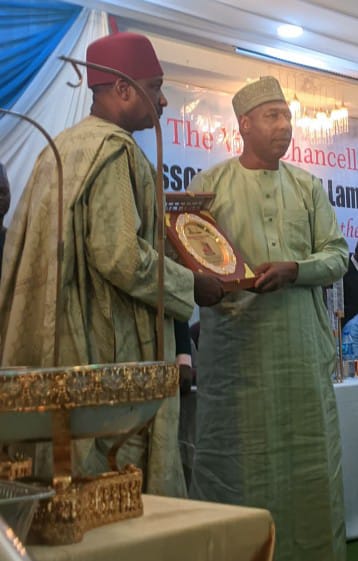
Unimaid @50: Day Professor Ahidjo Received Distinguished Alumnus Award
By: Dr. James Bwala
The conferment of the Distinguished Alumnus Award on Professor Ahmed Ahidjo by the University of Maiduguri on Saturday, 29, 2025, marks a significant milestone in recognizing exemplary contributions to academia and society. This prestigious accolade is reserved for alumni who have demonstrated outstanding achievements and unwavering commitment to service, reflecting the highest ideals upheld by the institution.
The personal presentation of this award by the Executive Governor of Borno State, Prof. Babagana Umara Zulum, further elevates its importance, symbolizing a strong endorsement from both educational and governmental leadership. Such recognition not only honors Professor Ahidjo’s individual accomplishments but also underscores the symbiotic relationship between academic excellence and societal development.
Professor Ahidjo’s distinguished career embodies a blend of scholarly rigor and impactful service that has significantly influenced his field and community. His innovative research contributions have advanced knowledge while addressing pressing socio-economic challenges within Borno State and beyond. Indeed, his dedication to education, particularly in the fields of medical science and public health, has been instrumental in shaping policies and initiatives that have improved healthcare delivery across the region.
READ ALSO: https://newsng.ng/umth-another-cap-for-the-chief-medical-director-prof-ahmed-ahidjos-distinguished-govtech-trailblazer-award/
Professor Ahidjo’s leadership in establishing collaborative networks with international health organizations has further amplified the impact of his work, fostering cross-border partnerships that enhance healthcare outcomes. His efforts have not only bolstered the academic reputation of the University of Maiduguri but have also inspired a new generation of scholars and practitioners to pursue excellence in their respective fields.
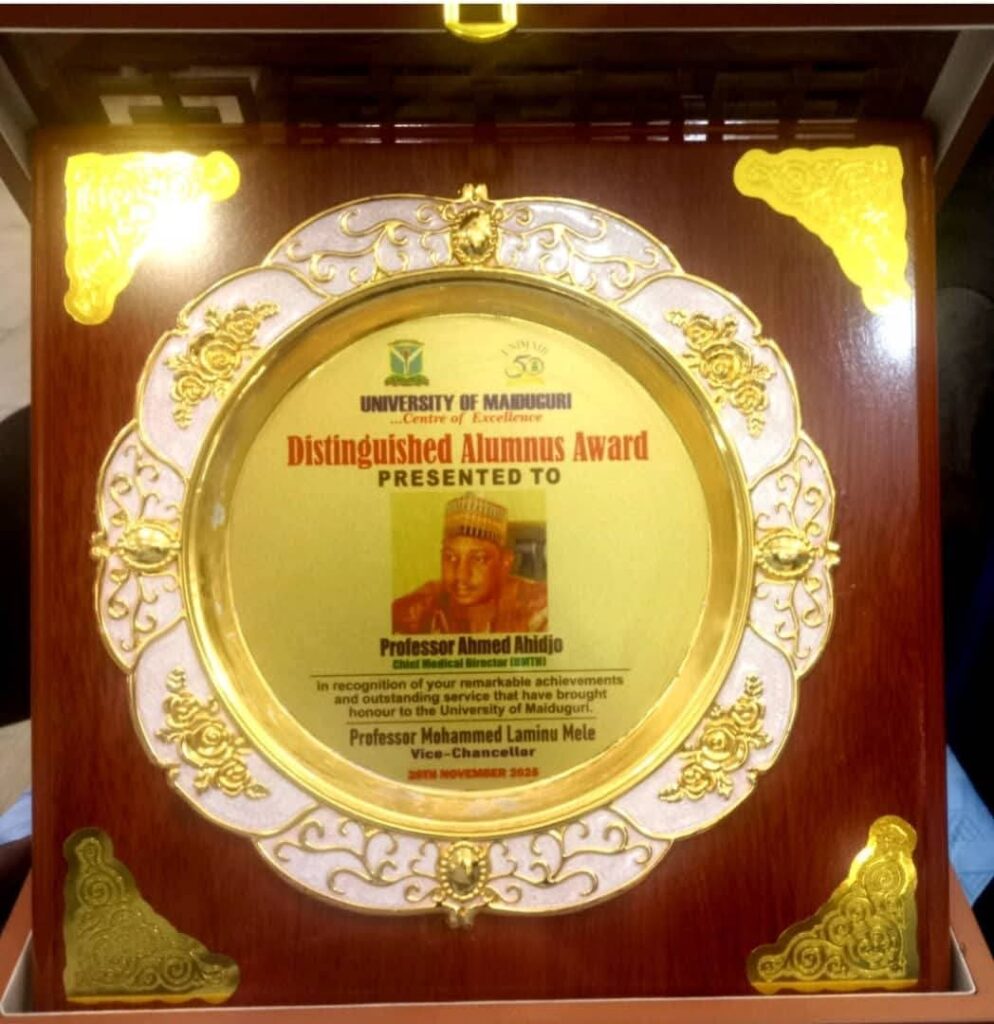
Ahidjo’s unwavering dedication to fostering educational growth and societal well-being serves as an exemplary model for current and future leaders committed to making a tangible difference in their communities. His commitment to mentoring young professionals and advocating for educational reform continues to inspire transformative change within the academic community and beyond.
He remained a star in promoting tireless advocacy for integrating modern technology into healthcare practices and also propelled the region towards embracing innovative solutions that address both local and global health challenges. Through his visionary leadership, Professor Ahidjo has consistently championed initiatives that prioritize sustainable development and equitable access to quality education and healthcare, reflecting his unwavering commitment to societal progress.
Those who followed the trend of his leadership at the University of Maiduguri Teaching Hospital observed that his influential role in bridging the gap between academia and practical healthcare solutions has been pivotal in addressing pressing health issues, demonstrating his profound impact on both local and international scales.
His contributions extend beyond academia, as he actively collaborates with various organizations to implement programs that empower underserved communities through education and healthcare initiatives. His dedication to fostering partnerships between educational institutions and healthcare providers has further enhanced the capacity for research and development.
This recognition not only highlights his individual accomplishments but also serves as an inspiration for future generations to pursue excellence in their respective fields. This choice of Professor Ahmed Ahidjo on this day not only demonstrated credibility in honoring individuals who distinguished themselves but also showed an unwavering commitment by the University of Maiduguri to societal betterment and reward for good works.
His work in advancing medical education and healthcare delivery has not only transformed lives but also set a benchmark for others to emulate. His dedication to fostering educational opportunities and improving healthcare infrastructure has inspired countless individuals to pursue similar paths of meaningful contribution and service. His contributions to the field of medicine, particularly in tropical diseases, have not only advanced scientific understanding but also led to tangible improvements in public health outcomes across Nigeria.
Professor Ahidjo’s relentless pursuit of innovation in medical research has not only garnered him national recognition but also established him as a leading figure in the global health community. Putting leadership and vision in his quest to promote the well-being of his community at the UMTH has played a pivotal role in shaping policies that prioritize health and education, making significant strides toward sustainable development in the northeast region.
His efforts have not only garnered accolades but have also paved the way for collaborative initiatives that continue to address critical health challenges in underserved communities. His recognition by the University of Maiduguri underscores the profound impact of his contributions and serves as a reminder of the power of education and innovation in driving societal progress.
His unwavering commitment to excellence and his ability to galvanize resources for impactful projects continue to inspire future generations of leaders and innovators. His enduring legacy of service and innovation continues to resonate, as he leverages his platform to foster partnerships that bridge gaps in healthcare delivery and educational access across the country.
This award is well deserved for a man of standing testimonies in education and healthcare innovation.
* James Bwala, PhD, writes from Abuja.
Unimaid @50: Day Professor Ahidjo Received Distinguished Alumnus Award
ACADEMICS
A History of Biu” (2015) and The Lingering Bura-Pabir Question (2)
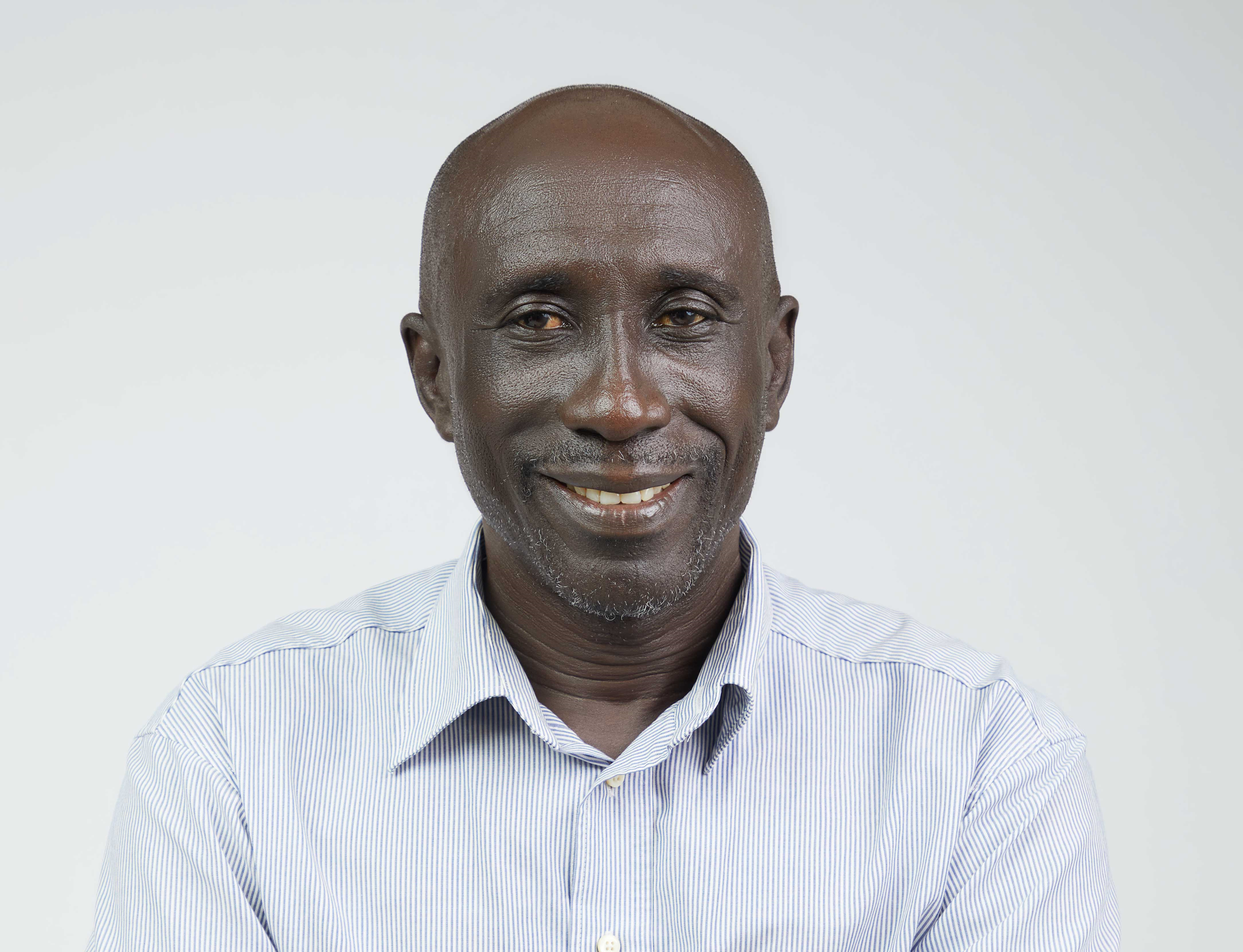
A History of Biu” (2015) and The Lingering Bura- Pabir Question (2)
By: Balami Lazarus
This is the conclusion of my previous article on the above caption. I appreciated those who commented positively with respect to Part 1 on the one hand. While some tongue lashed at me, calling me an agent of disunity, forgetting that the piece is and for the purpose of Bura cultural identity, coupled with some historical corrections of Dr. Bukar Usman’s book “A History of Biu” (22015) that carried some false historical virus of Babur as cultural identity. The conveyors of such identity are merely bears in the market of cultural history of Biu people on the other hand.
Therefore, the Bura-Pabir question is full of divides and indeed hooded in sentiments that have affected relationships intentionally seasoned by some selfish individuals nailed in the coffin of a fake Babur identity that has no origin or history. And this brings to the heavily tinted manipulation in order to disintegrate and displace the Bura people of their proud cultural identity, deliberately stirred in black mark to incapacitate them in a cultural identity crisis with the term Babur, a self-created identity that has become ingrained in the minds of many.
READ ALSO:https://newsng.ng/umth-how-professor-ahidjos-transformation-agenda-impacted-the-information-unit/
Recently, my attention was drawn to a book “Bura Language for Beginners” (2021) by Dr. Ahmed Dahiru Balami, where some people wanted to add Pabir to the title to read Bura-PPabir Language for Beginners, but the author refused and rejected the idea vehemently. This shows that Pabir has no cultural identity to stand independently on its own. Why must it lean on the Bura language? What is the position of Babur during and after Yamtara-WWala?
One of the major challenges among many of the indigines of Biu town is basically the issue of cultural identity that many are faced with as either Pabir or Babur. And when and if you addressed them as Pabir or Babur, you put them on a crossroads.
Similarly, the word Babur is the name of an ancient Oriental Emperor who once ruled India centuries ago. May be or may not, those who called and addressed themselves as Babur might have come from the bloodline of Emperor Babur through Yamtara-WWala.
The Bura man is very conscious of his cultural identity through his first name, like Thalma, Anjikwi, or Hyelni. And more importantly, his clan name. Their clan names are living cultural histories that give them a high sense of belonging among themselves, which equally distinguishes them from other clans such as Zoaka, Mshelia, Bwala, Shalangwa, Dibal, Balami, Mhya, Mbaya, Ndahi, Mshellbwala, Mibwala, and Mshelizah, among many others. What are the Pabir or Babur cultural identity/clan names called?
Therefore, for the reason of your book and for the clarity of cultural identity and understanding, I ask you, Dr. Bukar Usman, what and who are you? Do you have a clan name or ancestral root?
Finally, I came to understand that some of the families in Biu that I had interacted with, who are claiming to be Pabir, are really not, but Bura, who are infested by the bug of Babur, are now surfing in an inferiority complex cloaked and lost in the mist of cultural identities like “Piano and Drums” (clash of cultures), one of the works of Gabriel Okara.
This set of people is long conditioned to feel it is wrong, blemish, and clammish to be Bura but okay to be Babur. Probably Dr. Bukar Usman is one of such individuals. And for the sake of historical and cultural identity, I hereby rest my pen.
Balami, a publisher and columnist.
08036779290
A History of Biu” (2015) and The Lingering Bura-Pabir Question (2)
ACADEMICS
A History of Biu” (2015) and The Lingering Bura-Pabir Question (1)

A History of Biu” (2015) and The Lingering Bura-Pabir Question (1)
By: Balami Lazarus
The Bura-Pabir question has been on the front burner among the Bura and Pabir people in recent times. I was privileged to have read some works, both soft and hard copies, where such issues were briefly raised and treated lightly with no rationality or objectivity, plugged in historical infidelity, dishonesty, and bankruptcy by some authors and writers.
Unfortunately, this seems to be the preferred trajectory and ho-hum of these authors and writers, who relied more on hypothesis than empirical evidence, misleading some to believe that Bura and Pabir are the same in history, culture, and tradition. Thus, they have saturated the Bura and Pabir spaces with wrong information and sentiments that lack historical viscosity because of the absence of essential historical ingredients to lubricate them.
And these authors and writers want some of us to believe in their works as historical caveats. Was there Pabir as a people, circa 1535 AD? Definitely No. Why join this distinct group of people together? The protagonists of this porous notion are deliberately out to destroy and erase the origin, history, culture, and tradition of the Bura ethnic nation.
Therefore, their origin, history, and tradition are interwoven in their cultural source materials as part of their civilization. Never before now, there were no people known, called, and addressed as Pabir who are today wrongfully addressed as Babur by many who are not aware of their origin. Pabir is the name given to them by the Bura, who are the aborigines of the vast area known as the Biu Plateau (Viu original name and spelling) in northeast Nigeria.
Take notice that the word pabir is a noun that is related to a living thing, such as a species of ant While Babur is nowhere to be found in the Bura language as a noun or verb, And for this reason, a Bura man has for long distanced himself from being called and addressed as a Pabir or Babur man.
In history, I was taught that man is the source of history and its source materials are logged in economic and socio-political activities that formed his growth and development over a period of time. In this regard, you can never remove man from historical developments or otherwise. And when I read the work of one Dr. Bukar Usman, “A History of Biu” (22015), I have been trying to put it behind me, but my sense of history and discipline as a historian could not permit me to withstand the erroneousness and falsification I noticed in the said work in question, where Dr. Bukar was able to catalogue, classify, and index the exploits of Yamtra-WWala and those he met, fought, and conquered.
Who are the people with whom he fought? Therefore, I decided to put up this write-up as my contribution to this issue. I hope my teachers who taught me history will not be disappointed but rather be proud of some of the subjective knuckle punches I launched herein. However, I commend Dr. Usman in his attempt to bring Biu history to the fore, having limited the scope of his work to the emergence of the Biu Royal Dynasty, dwelling more on wars and conquests led by Prince Abdullah, Yamtra, and Ola (original Bura spelling) of the Kanem Empire from Birnin N’gazargamu, a Kenembu by tribe, with his band of 70 men who the Pabir traced their patrilineal origin to.
How it was changed to Yamtra: Wala came probably at the same time with the change from Pabir to Babur. The author, Dr. Bukar Usman, attempted to historically re-engineer Bura history to de-historize it of its Buranization properties in a gerrymeandering scheme simply to de-Buranize the Bura people in the History of Biu of their ethnic qualities, who see themselves as homogeneous tribes in language, culture, and tradition as their source materials.
Take, for instance, the yearly Bura Cultural Festival known as Marama Day. Where is the Pabir culture then? And why are some people deceiving others into thinking that Bura and Pabir are the same? Note that the Bura man is not, will not, shall not, and never will he call or address himself as a Pabir or Babur man, as they are wrongly addressed. Bura and Pabir are parallel to each other in culture, tradition, and language.
One is a dialect twisted in the concept of Babur. While the other is a tribe in a body of ethnic nation. As a page filler, Dr. Usman said “Wild Animals Commonly Found in Biu Territory,” such as tigers, cheetahs, ostriches, giraffes, zebras, and others. The tigers mentioned by the author in his book are not natives of the African wild and can never be found in the Biu Plateau wild territory.
Therefore, tigers have never lived freely in Africa except in captivity in zoos and parks. What we have are leopards (Tengvwa) in the Bura language. I will hereby, on a historical affidavit, put it to you, Dr. Bukar Usman, that you are wrong and have inflicted maximum fatal historical injury to the wild life history of Biu Plateau.
Balami, a publisher and columnist.
A History of Biu” (2015) and The Lingering Bura-Pabir Question (1)
-
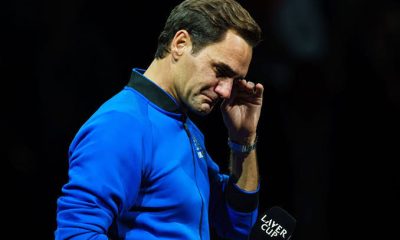
 News2 years ago
News2 years agoRoger Federer’s Shock as DNA Results Reveal Myla and Charlene Are Not His Biological Children
-

 Opinions4 years ago
Opinions4 years agoTHE PLIGHT OF FARIDA
-

 News9 months ago
News9 months agoFAILED COUP IN BURKINA FASO: HOW TRAORÉ NARROWLY ESCAPED ASSASSINATION PLOT AMID FOREIGN INTERFERENCE CLAIMS
-

 Opinions4 years ago
Opinions4 years agoPOLICE CHARGE ROOMS, A MINTING PRESS
-

 News2 years ago
News2 years agoEYN: Rev. Billi, Distortion of History, and The Living Tamarind Tree
-
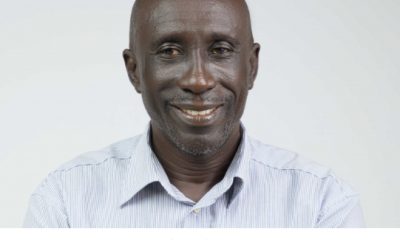
 ACADEMICS2 years ago
ACADEMICS2 years agoA History of Biu” (2015) and The Lingering Bura-Pabir Question (1)
-
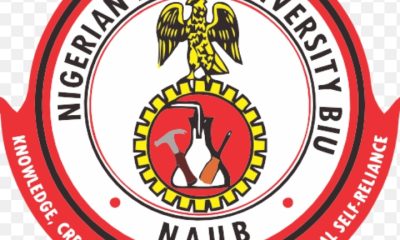
 Columns2 years ago
Columns2 years agoArmy University Biu: There is certain interest, but certainly not from Borno.
-
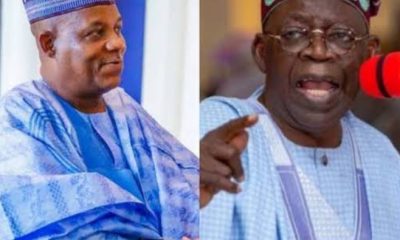
 Opinions2 years ago
Opinions2 years agoTinubu,Shettima: The epidemic of economic, insecurity in Nigeria




